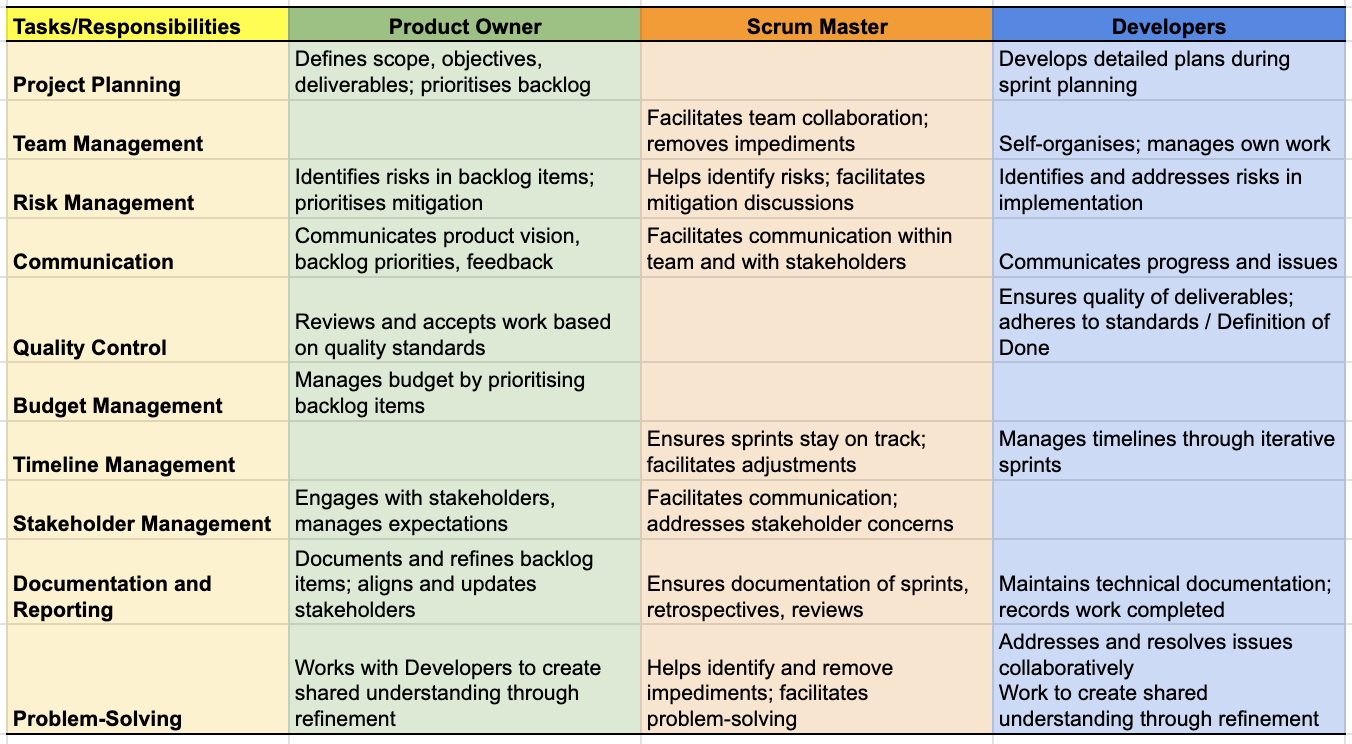The Evolution of Product & Project Management
Recent conversations with managers, budding Scrum Masters, could be Scrum masters, Product owners, Project Owners and teams motivated me to revisit this topic, given that none of the individuals and teams I am in discussions with, mentoring, coaching and training are digital teams. Seems apt to revist this topic with an FMCG lense.
In this blog I am specifically looking at how Scrum, a framework that emphasises teamwork, accountability, and iterative progress towards a well-defined goal has distributed and disrupted traditional role of a Project Manager for the better. Let's explore.
Traditional Project Management: A Snapshot
A traditional project manager wears many hats, handling a myriad of tasks and responsibilities such as:
Project Planning: Defining scope, objectives, and deliverables; developing detailed project plans, schedules, and timelines; allocating resources and setting budgets.
Team Management: Assembling and leading the product/project team; assigning tasks and monitoring performance.
Risk Management: Identifying potential risks; developing and implementing mitigation strategies.
Communication: Facilitating effective communication among stakeholders; conducting regular meetings and status updates.
Quality Control: Establishing quality standards and monitoring deliverables.
Budget Management: Tracking expenses and ensuring adherence to budget.
Timeline Management: Monitoring progress and ensuring timely completion of milestones.
Stakeholder Management: Engaging with stakeholders and managing their expectations.
Documentation and Reporting: Maintaining comprehensive project documentation and preparing reports.
Problem-Solving: Addressing and resolving issues and conflicts.
That’s a lot on one individual and a sure fire way of creating a single point of failure at worst and a bottleneck at best!
Transition to Scrum: Redistributing Responsibilities
In Scrum, these responsibilities are distributed across three key accountabilities: Product Owner, Scrum Master, and Development Team. Don’t get stuck with titles, a Project Manager in the marketing function can take on the responsibilities of a Scrum Master - no title change needed!
Here’s how these Accountabilities align with traditional project management tasks:
Aligning Traditional Management Tasks with Scrum Accountabilities
Benefits of Spreading Out Responsibilities
This shift has lead to:
Improved Collaboration: Enhanced teamwork and communication within the team.
Increased Accountability: Shared ownership and responsibility improve commitment and performance.
Faster Decision-Making: Decisions are made quickly and efficiently by the team.
Enhanced Flexibility: The team can adapt to changes and resolve issues more swiftly.
Higher Quality: Continuous feedback and iterative improvements lead to better outcomes.
Empowerment: Team members are empowered to take initiative and contribute more effectively.
The shift from a traditional project manager-centric model to the Scrum framework distributes responsibilities across the Team, fostering a collaborative environment where team members share ownership of the product/project/outcomes.
This transition not only enhances flexibility and responsiveness but also drives higher quality outcomes and greater stakeholder and team satisfaction.
If you’re curious to try it out, get in touch!











